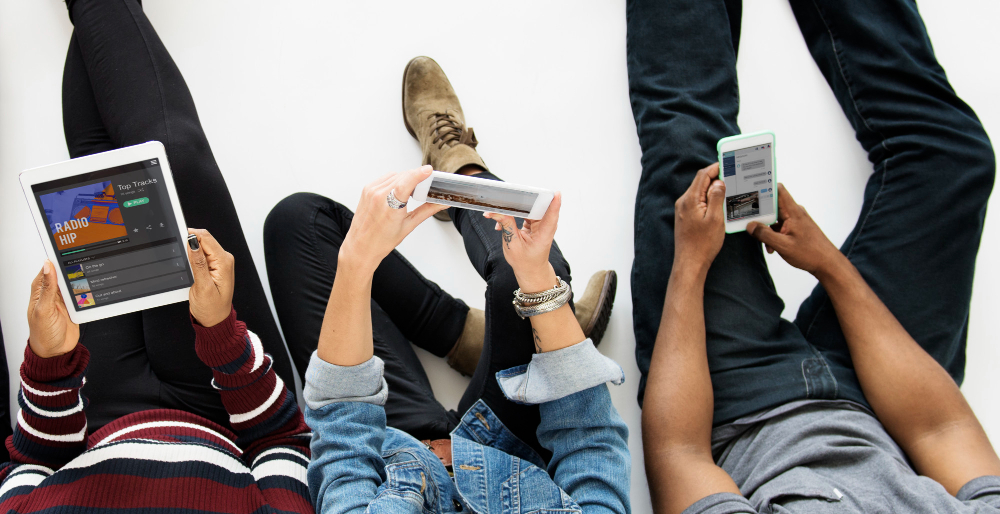Introduction: When Culture Went Digital
Not too long ago, culture was shaped by books, theatres, music albums, and TV shows that released once in a while and stayed with people for decades. Think about the influence of Shakespeare, The Beatles, or Doordarshan shows like Ramayan. Culture was slow-moving, deeply rooted, and passed down in long cycles.
But the digital age flipped this script. Today, we live in a world where one reel, one meme, or one dialogue from a film can go viral overnight and shape how people talk, dress, think, and even vote. Pop culture is no longer just about entertainment—it has become a powerful mirror of society, amplified by the internet.
So, how exactly do films, reels, and trends shape our world today? Let’s dive into the fascinating relationship between pop culture and the digital age.
- Films: More Than Just Entertainment
Films have always been cultural milestones. Whether it’s Sholay in India, Star Wars in Hollywood, or Parasite in Korea, movies tell stories that reflect society’s hopes, fears, and struggles.
🔹 Films as a Mirror of Society
- Bollywood classics like Mother India showed the struggles of rural farmers.
- Hollywood blockbusters like The Matrix reflected growing anxieties about technology.
- Recent films like Barbie and Oppenheimer sparked global conversations about gender politics, history, and morality.
Movies don’t just reflect society—they influence it. From fashion trends (remember Shah Rukh Khan’s “Raj” jackets?) to language (dialogues like “Mogambo khush hua”), films become part of everyday life.
🔹 Globalization Through Films
With OTT platforms like Netflix, Amazon Prime, and Disney+, films have gone beyond borders. An Indian teenager today can be obsessed with Korean dramas, while a US audience enjoys Sacred Games. This cross-pollination of culture has created a shared global digital culture that didn’t exist before.
- Reels & Short-Form Content: The New Cultural Currency
If films are the epic novels of culture, reels are the tweets of modern storytelling. Short, catchy, and addictive, reels have become the heartbeat of internet culture.
🔹 Why Reels Work
- Brevity: In an age of low attention spans, 30 seconds is enough to hook an audience.
- Virality: One trending sound or challenge spreads across millions of screens.
- Accessibility: Anyone with a smartphone can become a creator, influencer, or trendsetter.
Think about how dance challenges, funny skits, or lip-sync reels dominate Instagram and TikTok. Suddenly, ordinary people become celebrities overnight, shaping trends and conversations more than traditional celebrities.
🔹 Social Movements Through Reels
It’s not just fun and games. Reels have been used for:
- Awareness campaigns: Climate change, women’s safety, and mental health.
- Political messages: Young people mobilizing before elections.
- Cultural pride: Folk dances, regional cuisines, and forgotten traditions revived through viral trends.
Reels democratize culture—they allow everyone to create and consume it.
- Memes: The Language of the Digital Age
If you want to know what society is really thinking, forget newspapers. Look at memes.
Memes have become a cultural shorthand. A single image or caption communicates humor, frustration, and truth more effectively than long essays. From “How it started vs. how it’s going” to “Just vibing”, memes shape how we see politics, relationships, and even economics.
In fact, memes are so powerful that even brands, politicians, and governments now use them for communication. Remember the meme campaigns during elections or Netflix India’s witty meme marketing?
Memes are the pulse of pop culture—fast, funny, and brutally honest.
- Influencers: The New Cultural Icons
Earlier, film stars and cricketers were the only role models. Today, influencers rule the digital age.
From fashion bloggers to fitness YouTubers, influencers dictate how people dress, eat, travel, and even think. Gen Z looks up to influencers as much as, if not more than, traditional celebrities.
🔹 Why Influencers Matter
- Relatability: Unlike actors on a giant screen, influencers feel “like us.”
- Engagement: Direct conversations via comments and live sessions.
- Trust: 90% of young people say they trust influencers more than ads.
This shift shows how culture has decentralized. It’s no longer created only by big media houses—it’s created by individuals with smartphones.
- The Dark Side of Digital Pop Culture
It’s not all rosy. The digital age has also magnified some challenges:
- Overconsumption: Doom-scrolling and endless reels affect attention spans.
- Toxic trends: Dangerous challenges sometimes go viral, harming people.
- Unrealistic standards: Influencers often present filtered, “perfect” lives that cause anxiety and FOMO.
- Cultural Homogenization: While globalization is great, it sometimes erases local traditions.
Being aware of this balance is crucial—digital pop culture is powerful, but it needs responsibility.
- How Pop Culture Shapes Society
So, what’s the real impact of films, reels, and trends?
- Language: Slangs like “lit,” “savage,” or “jhakaas” spread through media.
- Fashion: From bell-bottoms of the ’70s to Y2K style revival today.
- Politics: Memes and reels influence voting behavior and youth participation.
- Social Change: Films like Pink or reels on LGBTQ+ rights push conversations forward.
- Collective Identity: Viral songs, series, or challenges make people feel connected across geographies.
Pop culture doesn’t just entertain us—it reshapes our worldview.
- The Future: Where Is Digital Pop Culture Heading?
Looking ahead, here are some trends that will define the next decade:
- AI-Generated Content: From deepfake songs to AI-written films.
- Virtual Reality Pop Culture: Immersive films, concerts in the metaverse.
- Personalized Reels: Algorithms tailoring trends for micro-communities.
- Cultural Archiving: Memes, reels, and digital art preserved as history.
- Hybrid Influencers: Human + AI influencers working hand in hand.
We are moving towards an era where the lines between real and digital culture will blur completely.
Conclusion: We Are All Culture Makers Now
In the digital age, culture isn’t just what celebrities or filmmakers produce. It’s what you, me, and millions of creators’ post every day. Films still inspire, reels entertain, and trends unite—but their power lies in participation.
We no longer just consume pop culture—we create it, remix it, and spread it. And in doing so, we’re constantly shaping the society we live in.
So next time you scroll through a reel, laugh at a meme, or watch a blockbuster, remember—you’re not just a spectator. You’re a participant in the grand digital cultural revolution of our times.

